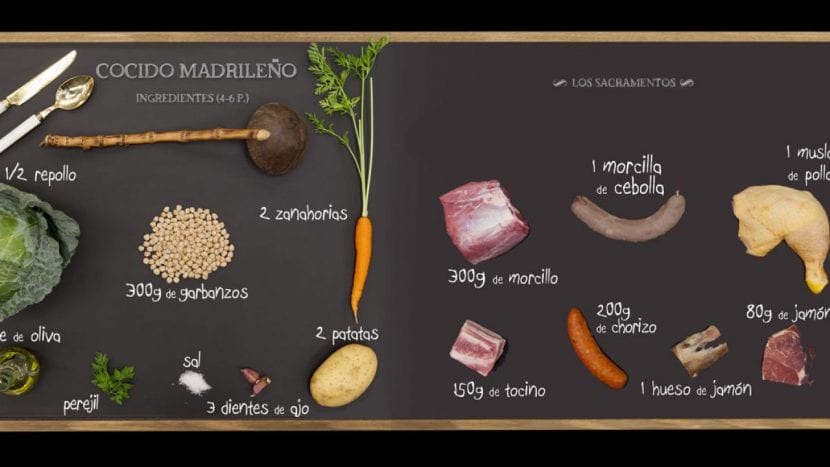
Source - Hogarmanía
El cocido is a traditional Spanish dish, very simple, and with a long preparation. The success of a good stew is to use very good quality ingredients. This will give the broth flavor and body, the chickpeas are just right, and the meat is tender and flavorful.
It is a very widespread dish throughout the Spanish geography and this means that there are many versions of stew, all defined by the most typical and traditional ingredients of each area.
What are the characteristics of a good stew?
A stew is made up of several dishes, or, as it is often called "overturns." The most basic one has two turns composed of the broth with the chickpeas and then the meat and vegetables, but there are up to fourteen turns in which a great variety of meats, nuts, rice, pickles, vegetables, sausages are used ... making a feast of this great dish.
There are also versions in which the stew is finished with some fried eggs, with tomato, chorizo and blood sausage.
What are the most famous stew versions?
Madrid stew: It is the most famous of all stews. It is made up of three turns, the first being the noodle soup, the second the chickpeas with the vegetables (cabbage, carrots, turnip ...) and the third the meats, cold meats, bacon and marrow.
Lalín stew: Typical of Galicia, it is one of the most famous since a fair is held around this dish.
Lebaniego stew: Typical of Cantabria, which includes an overturn with crumbs, eggs and meat.
Cooked Maragato: Typical of León, it uses up to seven meats and is served in three turns, but with the peculiarity that the sense is reversed so that it begins with the meats and ends with the soup.
Mountain stew: Also typical of Cantabria, its main characteristic is that white beans are used instead of chickpeas.
Andalusian cooked: in some cases pork is used more than beef, as it is more typical and abundant in this area.
Cooked balls: Very typical of the Murcia, Levante and part of Andalusia area, it is characterized by the balls, made from minced meat, spices, garlic, eggs, bread and parsley. The balls are also cooked in the broth and are part of one of the dumps.
How to take advantage of the remains of the stew?
Well, now that we have tasted a delicious stew ... what do we do with all that we have left over? We have chickpeas, vegetables, countless meats ...
Well here we leave you a selection of the best recipes to take advantage of each of the ingredients:
Cooked rice - here we will use a little of everything: chickpeas, vegetables and meat. Delicious!
Cooked croquettes - To take advantage of the chicken and use a little stew broth to give the bechamel all the flavor.
Cabbage with pear, apple and walnuts - to take advantage of the cooked cabbage and make a great vegetable dish.
Traditional chickpea hummus - a classic of Mediterranean cuisine that will have a special flavor after having used the chickpeas from the stew.
Chickpeas with peppers and goat cheese - a delicious dish to take advantage of the chickpeas.
Chickpea salad - easy and simple, as well as healthy and nutritious. It is a perfect starter, full of color and flavor.
To take advantage of the caldo, We freeze it in jars or in tuppers and we can use them later to make a noodle soup, rice, pasta, or use it as a cooking broth for rice (as in the recipe that we have put above cooked rice).
You can also freeze the chickpeas and use them later as you prefer. By the way, the chickpeas if you drain them well and fry them in plenty of hot oil and then add a few sprinkles of salt are really delicious. You can also have them sautéed with a tomato and cinnamon sauce (we will publish it on the blog soon).
The meats can also be shredded and used for a risotto or to fill sandwiches (soon we will also publish a delicious Andalusian tapas with the stew meat on the blog). So… stay tuned!